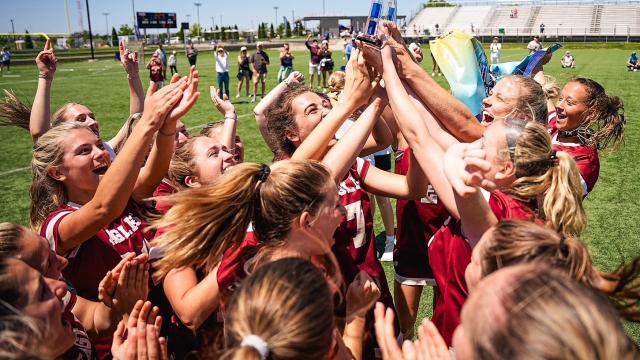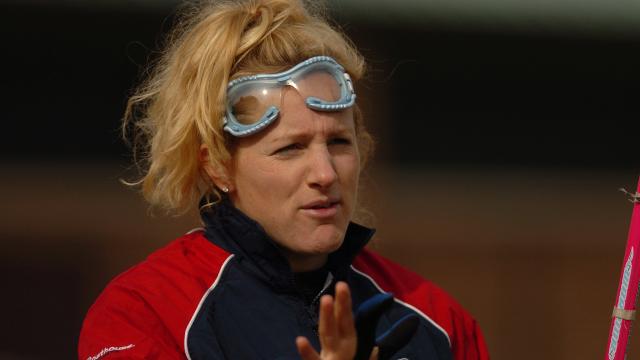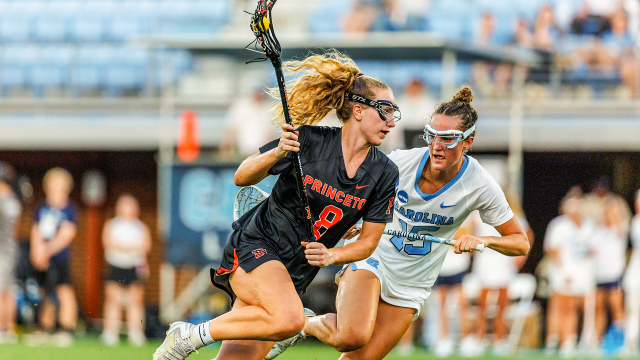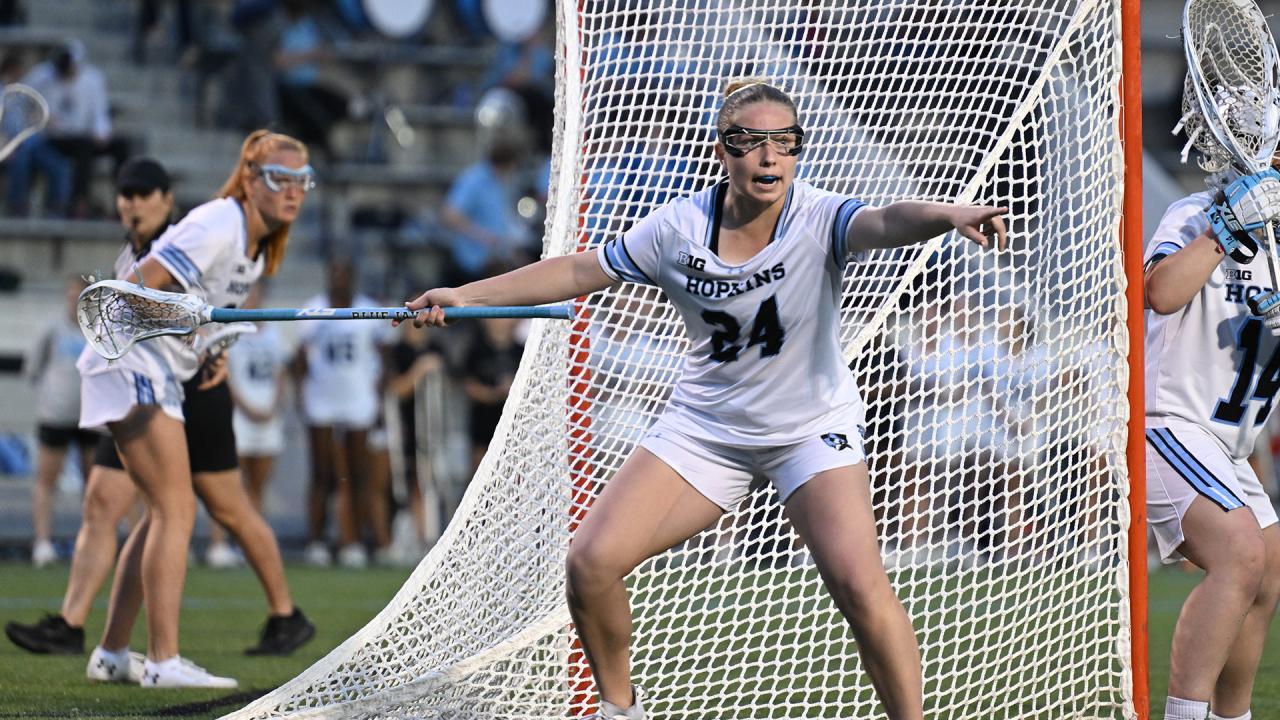
D-I Women's Bracket Analysis: Committee Gets A- with Seeds Only Question
Whether it was seeding the top eight teams or selecting the final team into the field of 29, the use of the RPI wasn’t solely a ranking tool.
“We look at the whole picture, not just the RPI,” said committee chair Samantha Eustace, the head coach of Mercer. “We understand that outside people looking in must mean [the RPI] is where they’re at, but it’s one point.”
This played out in how the field was seeded as fourth-rated Princeton surprisingly didn’t receive one of the coved eight seeds. In fact, teams 4-11 didn’t line up with their RPI at all.
After the expected top four seeds of North Carolina, Boston College, Northwestern and Florida were unveiled, Virginia and Maryland were slotted fifth and sixth, respectively.
As for why Maryland earned a higher seed than Ivy League champion Yale, Eustace cited the Bulldogs’ loss to Brown (more on them later).
Johns Hopkins gets a surprise seed
The toughest decision was about who would be the No. 8 seed, and that turned out to be Johns Hopkins. The Blue Jays had the No. 10 RPI and were without a win over another team who was seeded, but Eustace said their profile was stronger than both Princeton and Stanford.
“Those were the teams who were very close,” Eustace said. “Looking at those three teams together, you end up Hopkins over Princeton and Princeton over Stanford with significant losses.”
The decision was made late in the proceedings, as the Ivy League was among the final tournaments to conclude.
“As a committee we met everyday for seven days going over this,” Eustace said. “It would be great if the Ivies weren’t playing on the final day. My conference [the Big South] is guilty of that, too. It was such a trickle-down domino effect with the Ivies because they’re such a strong conference.”
The case for Hopkins is five wins against the RPI top 20, while Stanford (4) and Princeton (3) lagged in that category. Additionally, Stanford had two losses to teams beyond 20th. A big sticking point for Princeton is the fact it won against a seeded team (Yale) while Hopkins did not.
Brown final team in
It was surely a nervous night in Providence as only unseeded slots remained, but only one of them reserved for an at-large berth. And then there was jubilation for the Brown Bears, who are dancing for the first time in school history.
At No. 27 in the RPI, the Bears are just the fourth team with an RPI worse than 24 to be included as an at-large team, and they did so at the expense of three other Ivy League teams: Harvard, Dartmouth and Cornell.
“We talked a lot about it,” Eustace said of the bubble discussion. “Brown beat [Harvard] head-to-head and had a significant win over Yale.”
The Crimson were left out with three losses to non-tournament teams, while conference compatriots Dartmouth and Cornell were among a group of five cited by Eustace as being left out. Also omitted were Drexel and Virginia Tech.
The mega bracket in Gainesville
There are rematches galore in Gainesville, as No. 4 Florida will host Mercer, while Stanford and Denver face off just a few weeks after the Pioneers’ victory in California. It must be noted that Stanford and Denver are the only two teams who are flying in this tournament, which is why they’re matched up together.
Geography is one of the parameters of bracketing this tournament, which leads to imbalance. In a perfect world, No. 4 should be facing No. 29, which would’ve been Akron. Instead, the Zips drive to Evanston to play Michigan. Instead of the No. 13 team traveling to Gainesville, it’s No. 10 Stanford.
“We will continue to push the NCAA to seed the women’s lacrosse tournament for 16 teams like they do for women’s soccer and volleyball,” Eustace added.
Patriot League earns three bids for first time
Navy and Loyola were known inclusions to the field, but early in Sunday’s show, Army was revealed, and thus history was made: the Patriot is a three-bid league.
All three teams will be on the road, but two of them (Navy, Loyola) are the higher rated teams. Navy faces Clemson in Chapel Hill, North Carolina; Loyola plays Stony Brook for the right to play Boston College; Army meets Penn in College Park, Maryland.
History setters
There are four teams making their NCAA tournament debuts: Akron, Brown, Clemson and Liberty. The Zips won the MAC, Liberty the ASUN, while Brown and Clemson snatched two of the 14 at-large bids.
The Favorite
North Carolina (18-0) is undefeated having twice beaten Boston College. The biggest challenge might not be seen until the semifinals when the potential to face a rematch with Florida, who the Tar Heels defeated by five in February. And if there is to be a third meeting with BC, it will take place in Massachusetts.
The Dark Horse
Stanford, without question. The young Cardinal side showed flashes of brilliance with wins over Virginia, Yale and Syracuse, with moments of frustration in losses to Army and Denver. It’s plausible they avenge that loss to Denver, upset Florida and take out whomever comes from the Charlottesville regional to reach the semifinals.
Last teams in
According to Eustace: Army and Brown.
First five teams out
According to Eustace in alphabetical order: Cornell, Dartmouth, Drexel, Harvard and Virginia Tech.
Biggest Snub
None. The case to include Brown over Harvard or the other excluded bubble teams was sound.
Toughest Draw, Part I
Florida. Should the Gators get through Eustace’s Mercer side, they will have a difficult matchup in the second round against either Stanford or Denver. If they pass that test, the prospect of hosting Virginia, Duke or James Madison awaits in the quarterfinals.
Toughest Draw, Part II
Northwestern. The committee did the Wildcats no favors, as they’ll face a Big Ten foe in the second round in Michigan. Two years ago, the Wolverines nearly pulled off the upset of the year.
After that, a quarterfinal tilt could be a Big Ten championship rematch with Maryland. The Terrapins led for most of the game. And even then, BC might be waiting for the Wildcats in the semifinals. If Northwestern wins the national title, they’ll have certainly earned it.
Upset Alert, Part I
Stanford over Florida in second round.
Upset Alert, Part II
Brown over Syracuse in the first round. The Orange have been inconsistent all year, and the Bears beat a Yale team that took out Syracuse in early April.
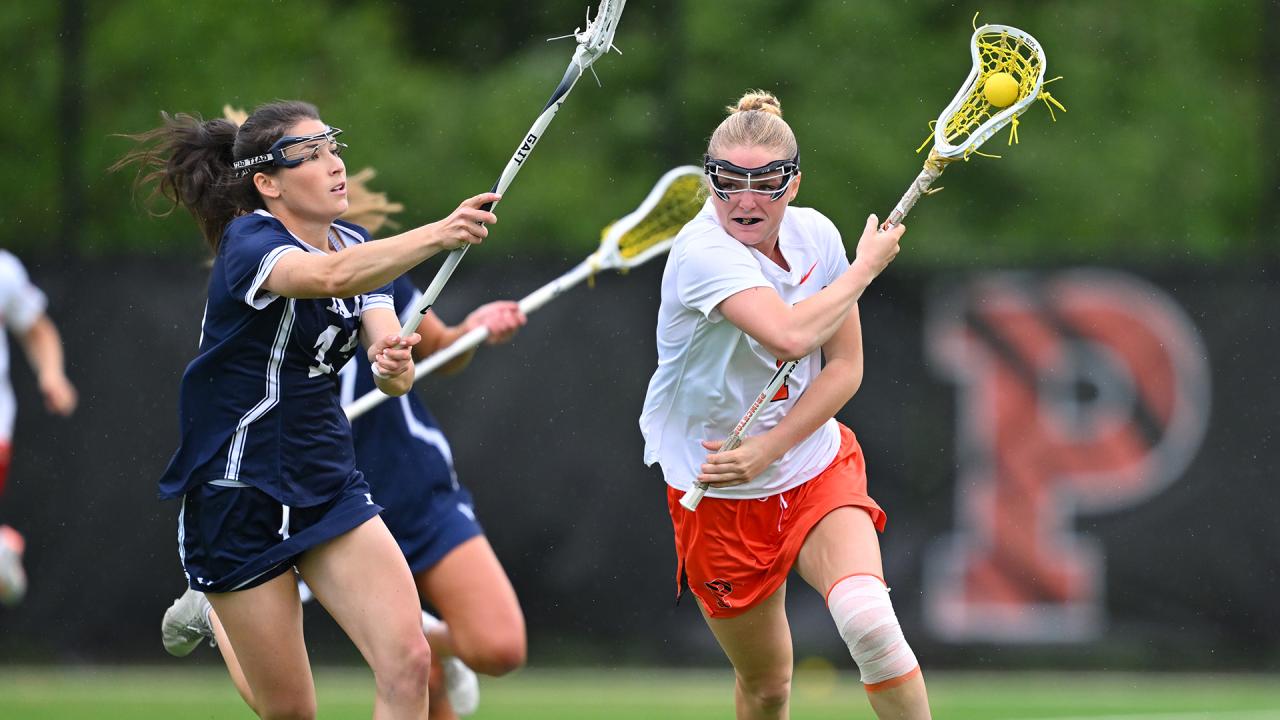
Revenge Fuel, Part I
Stanford vs. Denver. Expect a tight game in Gainesville.
Revenge Fuel, Part II
Maryland vs. Penn, Northwestern. The Terrapins have begun to roll and overcoming earlier heartbreaking losses are in the offing.
Don’t be surprised if…
Chalk wins among the top three seeds, but chaos exists elsewhere. After UNC, BC and Northwestern, there aren’t any rock-steady favorites to advance. With so many potential rematches, there will be a crapshoot element to this year’s tournament in the opening weekend.
Players to Watch
- Chase Boyle, M, Loyola: Now a two-time Patriot League Midfielder of the Year, Boyle does it all. She has 74 goals and an astonishing 204 draw controls (10.7 per game) including 17- and 22-control single-game efforts.
- Shea Dolce, G, Boston College: Her last-second leaping kick save sealed BC’s national title a year ago and the two-time ACC Goalkeeper of the Year is back to do it again.
- Rachel Clark, A, Boston College: The ACC Attacker of the Year is closing in on 100 goals (and the single season Division I record) this season. She’s recorded 11 games of five goals or more.
- Ashley Humphrey, A, North Carolina: The nation’s leader in assists per game (3.89), she has 70 dimes and is accurate when she must shoot (62.2% shot percentage, 28 goals from 45 shots).
- Chloe Humphrey, A, North Carolina: A pure goal scorer (73), she has recorded at least two goals in every game this season.
- Kate Galica, M, Virginia: The sophomore was named ACC Midfielder of the Year for her all-around play — 40 goals, 160 draw controls, 16 ground balls and 16 caused turnovers.
- Madison Taylor, A, Northwestern: The unanimous Big Ten Attacker of the Year and one of the top candidates for the Teawaaraton, Taylor has exploded for 125 points (89G, 36A). She has scored at least a hat trick in 16 of 18 games and recorded at least five points in all but one game this season.
- McKenzie Blake, A, Princeton: The unanimous Attacker of the Year in Ivy League scored 73 times this year including a pair of eight-goal outbursts against Rutgers and Stony Brook.
- Orly Sedransk, G, Penn: Called upon as a first-year player to back the Quakers defense, Sedransk was named Ivy League Rookie and Goalie of the Year. She’s recorded 10 or more saves seven times in the past eight games.
- Madison Epke, M, James Madison: The all-time draw control leader in JMU history, Epke leads the nation in draws per game (12.61). She’s pulled down 15 or more controls on eight occasions, while scoring 63 goals and dishing 21 assists.
- Reagan O’Brien, D, Johns Hopkins: The Big Ten’s Defensive Player of the Year, O’Brien leads nation in caused turnovers per game (4.72), while collecting a career-high 52 ground balls.
- Erin O’Grady, G, Michigan: Again, one of the top shot-stoppers in college lacrosse (54% save percentage), if Michigan is to turn an upset against Northwestern it will be in part because O’Grady denies the Wildcats.
You’ll hear a lot about…
The top three waltzing to the semifinals — and they should. They’re heads and shoulders better than the rest of the pack.
Predictions
North Carolina, Boston College and Northwestern hold serve, while a wildcard like Stanford makes it out of the 4-5 quadrant.
In the end, Boston College reaches its eighth straight final and finds revenge against UNC to claim back-to-back titles.
Grading the Committee
A-: The NCAA selection committee was nearly perfect.
It got the correct 29 teams in the field and set up very interesting matchups for the opening two rounds of the event.
It is fair to criticize if Johns Hopkins is truly a better candidate to host the opening two rounds over Princeton. It’s rare to drop a team five places in the RPI when it the Ivy League regular season championship and didn’t carry a bad loss.
Moreover, Princeton still had a better win (Yale) than Hopkins recorded (JMU). There’s a good chance those two teams will meet on Sunday to determine a spot in the quarterfinal, and that will be a chance for Princeton to prove it belonged to host.
Other quibbles will be about Yale (14-3) being seeded below Maryland. The Bulldogs are on a heater right now with seven straight wins including an 11-goal romp over Princeton. Ultimately, it’s not a huge deal other than possibly forcing Maryland to play Northwestern a third time.
On the bubble, the committee got it right. Brown earned its way in; Harvard, Drexel, Virginia Tech and the other Ivy League teams did not.
Lastly, the committee remains handcuffed by the NCAA’s travel policy that forces Stanford and Denver to fly to Gainesville, unfortunately. This tournament would benefit greatly from having the top 12 or 16 seeded.
“We sort 1 through 29, we don’t just stop at 8,” Eustace noted. “We actively try to get a proper seed for each team in the field and matchup accordingly as close within our geographic limits.”
Bracketology Breakdown
This was the most accurate bracket we’ve predicted. We went 29-for-29 and got seven of eight seeds selected including the top five on their seed line (we had Yale, Maryland and Princeton as 6-8 instead of Maryland, Yale and Johns Hopkins).
Moreover, we got 21 of the 29 slots placed in the exact spot on the bracket. Of the eight teams that weren’t in the exact slot, we correctly predicted the matchups of Penn vs. Army and Syracuse vs. Brown even if they were in different pods.
Jeremy Fallis
Jeremy Fallis primarily writes about the NCAA Division I women's lacrosse tournament with bracket predictions and analysis, in addition to covering conference realignment. Previously, he worked in athletic communications at Saint Joseph's (2007-09) and Penn State (2009-16), serving as the primary contact for men's and women's lacrosse. Fallis has contributed to USA Lacrosse Magazine since 2017.

Categories
Tags
Related Articles
